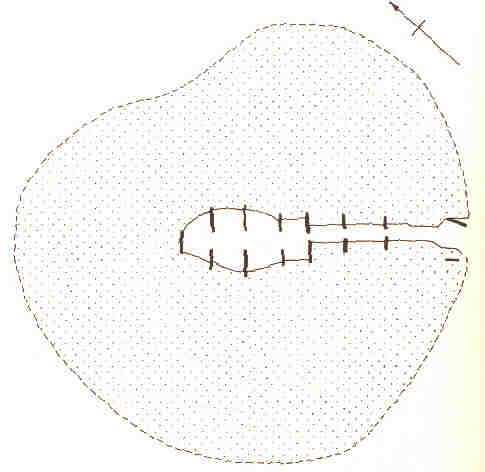|
Monuments and Water: |
| Monumentality In
Caithness The origins of chambered cairns in northern Scotland are traditionally associated with the introduction of domesticated plants and animals sometime in the early 4th Millennium BC (Richards 1992). At this time the newly Neolithic populations are assumed to have adopted farming, or elements of it, together with a sedentary lifestyle and new technologies. However, recent analysis of this supposed Neolithic ‘package’ has called into question the idea that the construction of monuments was a direct consequence of the adoption of agriculture (Bradley 1993), concentrating instead on shifts in cosmological perceptions. Several authors have noted (Bradley 1993, Edmonds 1999b, Richards 1992) that one of the most important changes seen at the beginning of the Neolithic was the emergence of a different perception of time and space from that seen within the Mesolithic hunter-gatherer societies. The world ceased to be understood in terms of movement within and between places, and instead began to be perceived from places (Richards 1992, Thomas 1991). The most recognisable of these places in Caithness are the chambered cairns. Through their incorporation in the landscape, the builders of these monuments appear to have been cementing the significance of certain locales into the human consciousness. According to Richards (1992) their construction effected “conceptual and physical order on the fluidity of existence and the natural world”. Chambered cairns are also intrinsically linked to the dead and the creation of the ancestors, and serve to objectify the past in the present through physical architecture (Richards 1992, Tilley 1994). |
|
Figure 1 – Plan of an
Orkney-Cromarty chambered cairn (after Richards 1992) |
|
In his discussion of the Orkney-Cromarty chambered cairns, such as those found in Caithness, Richards (1988) suggests that they were constructed from an external point of view, with the linear design of the chamber allowing visual access to the interior of the tomb from the forecourt area. He concludes that this construction would have resulted in differentially weighted space throughout the tomb, with the innermost compartment providing the focal point for activities within the chamber. The upright orthostats dividing the chamber are seen as doorways, leading visitors along a path to the deepest point of the structure (Richards 1992, 71). The end compartment, which contains the large backslab, is, therefore, the ultimate goal, the end of the path. The backslab represents the final doorway, the door to immortality through which the living cannot pass (ibid. 73). In Caithness the living are, in archaeological terms, relatively invisible. We have no evidence of settlements such as those found in Orkney, and few clues to the daily rhythms of life during the Neolithic period. I suggest that we should view the populations not as sedentary arable farmers, but as semi-nomadic, exploiting both natural resources and the newly introduced domesticated plants and animals. In a landscape as rich and varied as Caithness it is difficult to envisage people giving up a relatively easy hunter-gatherer lifestyle for a difficult and uncertain agricultural one. This, I believe, is a fundamental element in our understanding of the chambered cairns of Caithness; they were created by people who were still moving around the landscape, exploiting different resources at different times of year. However, the very fact that these monuments were built indicates the effect that agriculture, in whatever form, had on the Neolithic populations. People were no longer living with nature; they were attempting to control it (Bradley 1993). |
| Back to Caithness Forward to The Grey Cairns Of Camster |
